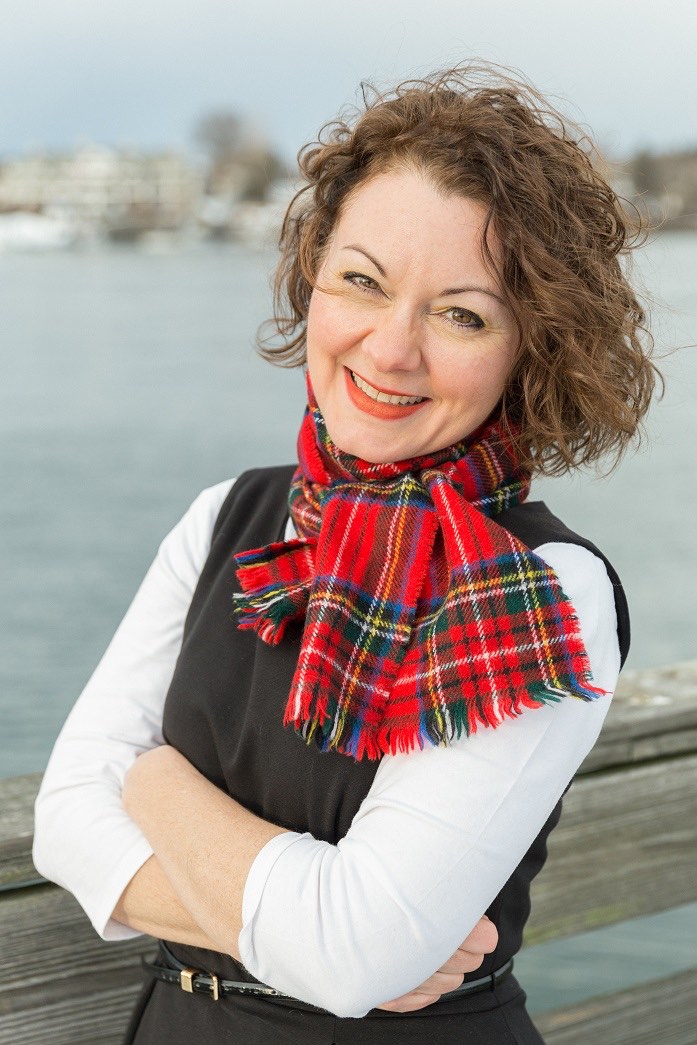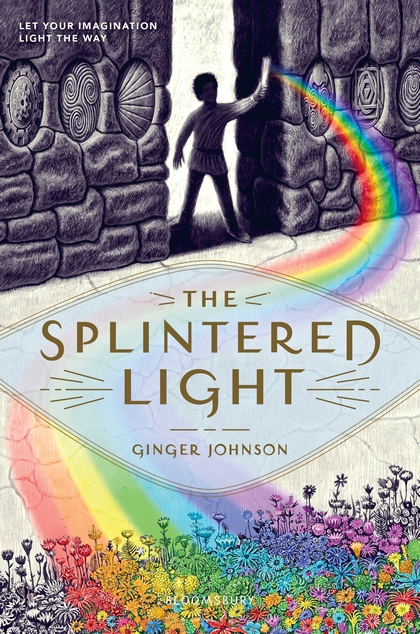 Ginger Johnson is the author of The Splintered Light. The following is a complete transcript of her interview with Cracking the Cover.
Ginger Johnson is the author of The Splintered Light. The following is a complete transcript of her interview with Cracking the Cover.
Why do you write? Why specifically for young people?
Writing is a form of therapy for me. I meandered down different career paths—dance, art, teaching composition. While each of these things provided me with a creative path, writing provided me a way home. I took a writing class called “Memoir and the Imagination” taught by Louise and Tom Plummer in college, and when I completely lost track of time working on an assignment, I realized writing gave me a sort of therapeutic zen. I dipped into that zen occasionally, writing some creative non-fiction, but it wasn’t until I began writing fiction for children that I really found my place. I write for young people because I’ve always been a reader of children’s books. Even in college and early adulthood, I found myself drawn more to kids’ books than to adults’ books
Where did The Splintered Lightcome from?
It came, in part, from new motherhood. When my oldest son was a baby, I read a collection of essays about physics, cosmology, astronomy, etc., called Mind Over Matter: Conversations with the Cosmos by the science writer K.C. Cole. I had a lot of time to think about these essays while walking through the neighborhood every day with my son. I had a few lucid moments during those sleep-deprived walks when my thoughts about the cosmos collided with the world around me, and in those moments, I was completely taken with the elegance of our world. I began seeing everything around me in a new way. Really, why was the sky blue? Why was the earth brown? Why were plants green? I decided that I needed to tell that story.
Though Ishmael and the House of Hue are the main focus of your book, the other houses/disciplines are also featured heavily. How did you decide what disciplines to include? Why did you choose to focus on color?
I adore color. I began college as an art major, and I reveled in mixing lush oil paints into rich colors. I still do. From the beginning, this story was always about color. In fact, its original title was Spectrum. It wasn’t until later that I realized that this story was much larger than I had originally intended, and that if this were truly a story about creating and creation, it would, of necessity, require other aspects of creation. I began to consider what other Halls would need to exist alongside the Hall of Hue. I considered movement, sculpture, smell, taste, biology, and sound, but not all of these options got to the most basic units of creating.
So I went to the beginning. I asked myself, if I were to create something, how would I go about it? I would first have to design it. Thus came the Hall of Shape. Someone would need to build what was designed. My husband mentioned the word Manufactory, which was perfect—pragmatic, but not artsy. Once I had something designed and built, it would need to move, hence the Hall of Motion. Those three halls were the basic building blocks. From there, came the elements of beauty: Hue, Sound, Scent, and Gustation.
How much research went into this book and how much is your imagination?
So. Much. Research. Especially about color and light. The composition of light. Sources of light. Reflection vs absorption vs scattering. Chromatics. Translucence and transparence. Iridescence. Color blindness. Synesthesia. The psychology of color. The meanings of color. And that’s just where I started.
When I noted that there were seven colors in a spectrum and there were seven musical notes, I wondered if there could be seven delineations in the other halls. I researched each of them, looking for seven basic building blocks for each hall. Surprisingly, most had seven or else they came close. Seven dimensions (Shape). Seven simple machines (Manufactory). Seven types of movement. Seven scents. Seven flavor profiles. I did use a bit of artistic license in formulating some of these groupings, but I tried to stick to science as much as possible to lend an element of believability.
 If you could join any Hall in the Commons, which would it be?
If you could join any Hall in the Commons, which would it be?
I think I’ve been in every Hall at different stages of life. Still, I love Hue, but I’ve never specifically spent time with the fundamental element of shape, which is really at the root of all design.
Will there be any more books in this world?
I am working on a companion novel that isn’t set directly in the Commons, but there is reference to the Hall of Scent and to the Commons in general.
Luc’s character takes a sharp detour halfway through. Why was this important?
In order to have some kind of emotional impact, I needed to have a shift in character. Luc was always the antagonist, but no antagonist can ever be complete if he or she is a stereotype. Stereotypes are never, ever good. Not in life, and not in fiction.
How much did The Splintered Light evolve from when you fist conceived it to publication?
Let’s just say that I began writing it as first person journal entries and after about a zillion rewrites in which I changed everything from characters’ names to gender to relationships to desires to POV to meaning and symbolism, I did a complete plot overhaul in a late stage of editing. Writing The Splintered Light was like gathering grains of sugar for your tea and deciding ultimately that you’d rather have a five-layer bittersweet chocolate cake with ganache icing and a string orchestra to go along with it. However, the story was always about color. It was always about creating. That never changed. Just, you know, everything else. J
What are you working on now?
I’m working on a companion novel to The Splintered Light about scent, which, just for the record, is really hard to write about. I dare you to try describing a scent without using another scent as comparison.
Is there a book from your own youth that still resonates with you today?
The first book I fell in love with was A Wrinkle in Time. But there was also Bridge to Terabithia, Tuck Everlasting, From the Mixed-Up Files of Mrs. Basil E. Frankweiler, and The Westing Game. My mother was an elementary school librarian, so I spent a lot of time in libraries and with books.
